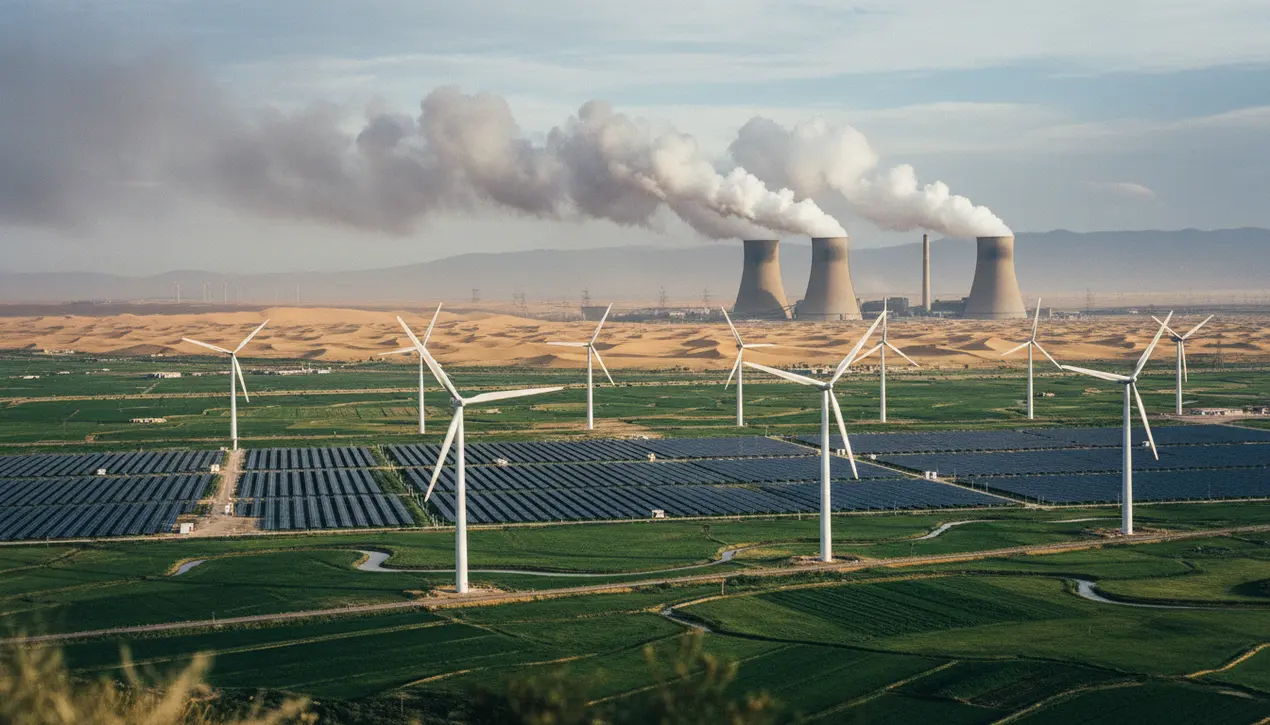
Scienceclimate scienceRenewable Energy Research
China's Coal Power Expansion Amidst Renewable Energy Boom.
RA
Rachel Adams
18 hours ago7 min read2 comments
Along the Hexi Corridor, a fertile strip in western China's Gansu province nourished by the Yellow River and bordered by the vast Gobi, a stunning tableau of human ambition unfolds. Here, a gleaming forest of wind turbines and solar panels stretches toward the horizon, a testament to China's position as the undisputed global leader in renewable energy installation.This is the nation's renewables frontier, a landscape being transformed by the relentless pursuit of clean power. Yet, just beyond the dunes, a more familiar, more ominous giant stirs, its breath darkening the very skies the solar farms seek to harness.At the Changle Power Plant, the deep-throated roar of turbines signals the activation of another massive 1-gigawatt coal unit, bringing the site's total to six pulsing reactors capable of powering millions of homes. This simultaneous build-out of green and black energy encapsulates a profound and alarming contradiction at the heart of China's energy strategy.While the country is on track to smash its ambitious 2030 renewable targets years ahead of schedule, it is also approving new coal-fired power plants at a rate that dwarfs the rest of the world combined. This isn't merely a backup plan; it's a parallel energy system being constructed at a staggering pace, with local governments authorizing enough new coal capacity in just one year to power the entire United Kingdom.The official rationale, often repeated in state media, centers on energy security and grid stability—the sun doesn't always shine, the wind doesn't always blow, and coal provides a reliable baseload to prevent the blackouts that could cripple industrial output and social stability. However, this narrative ignores the deeper, systemic drivers: powerful state-owned coal and grid enterprises with immense political influence, provincial governments reliant on construction and manufacturing for economic growth, and a deep-seated institutional preference for massive, centralized power projects over the more distributed and flexible model required for a truly renewable-dominated grid.The consequences of this dual-track approach are being felt along an intricate chain of cause and effect. Domestically, the continued reliance on coal condemns millions of citizens in megacities like Beijing and Shanghai to recurring bouts of hazardous air pollution, a public health crisis with documented links to respiratory and cardiovascular diseases.Internationally, China's carbon emissions, already the highest in the world, are set to remain elevated for years longer than necessary, directly undermining global climate goals and placing immense strain on international climate diplomacy. The very infrastructure being built today—designed for a 40 to 50-year lifespan—creates a carbon lock-in, a future where the economic incentive to continue burning coal will clash violently with the escalating climate emergency.Experts from organizations like the Center for Research on Energy and Clean Air point to a troubling inertia; the political and economic machinery behind coal is so entrenched that it continues to accelerate even as the renewable alternative proves its technical and economic viability. The story of Gansu, with its windswept plains shadowed by coal plant emissions, is therefore not one of a simple energy transition, but of a nation caught between its visionary future and its powerful past, a struggle whose outcome will irrevocably shape the health of the planet for generations to come.
#featured
#China
#coal power
#renewable energy
#Gansu
#energy policy
#Hexi Corridor
#energy mix
Stay Informed. Act Smarter.
Get weekly highlights, major headlines, and expert insights — then put your knowledge to work in our live prediction markets.
Comments
Loading comments...
© 2025 Outpoll Service LTD. All rights reserved.